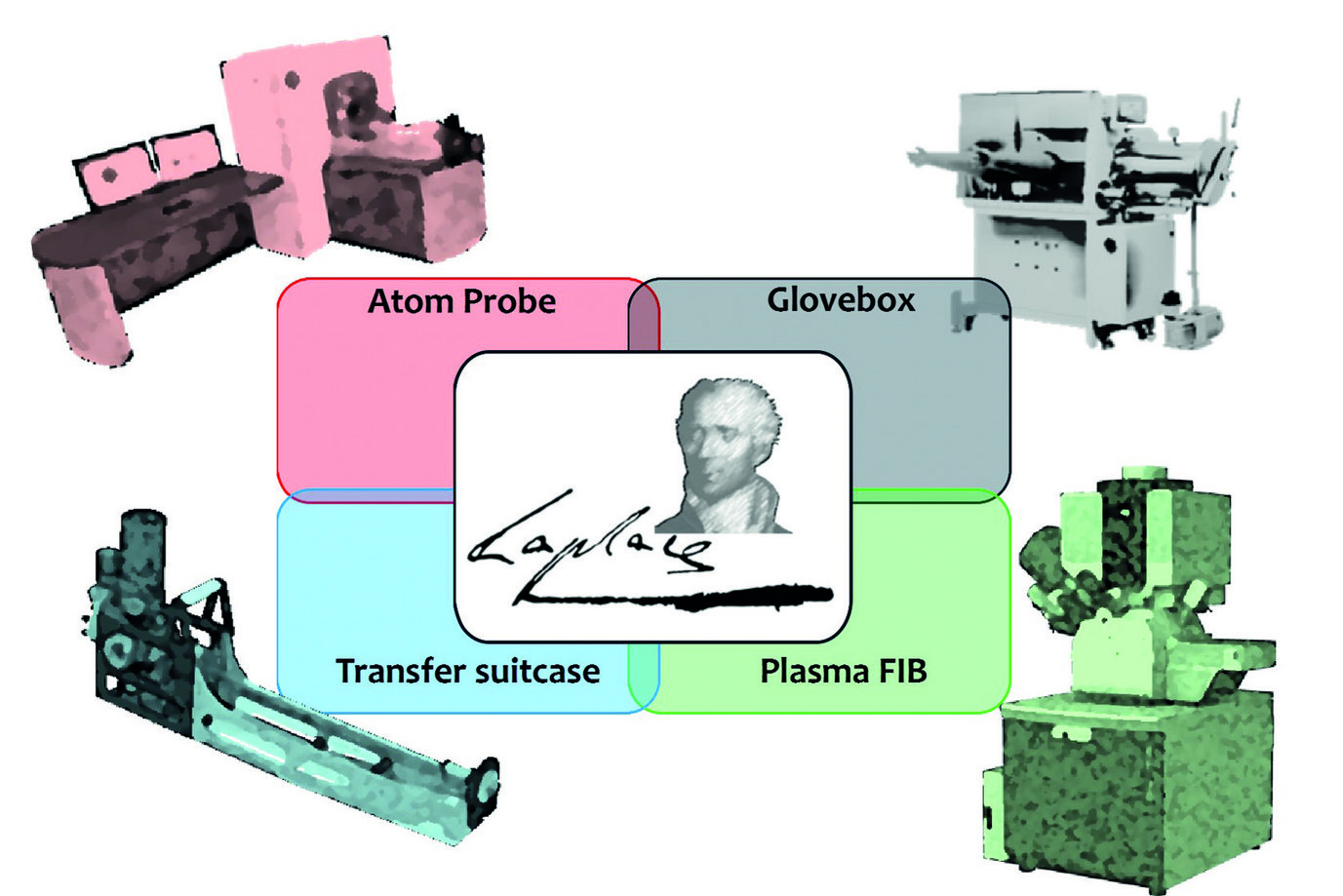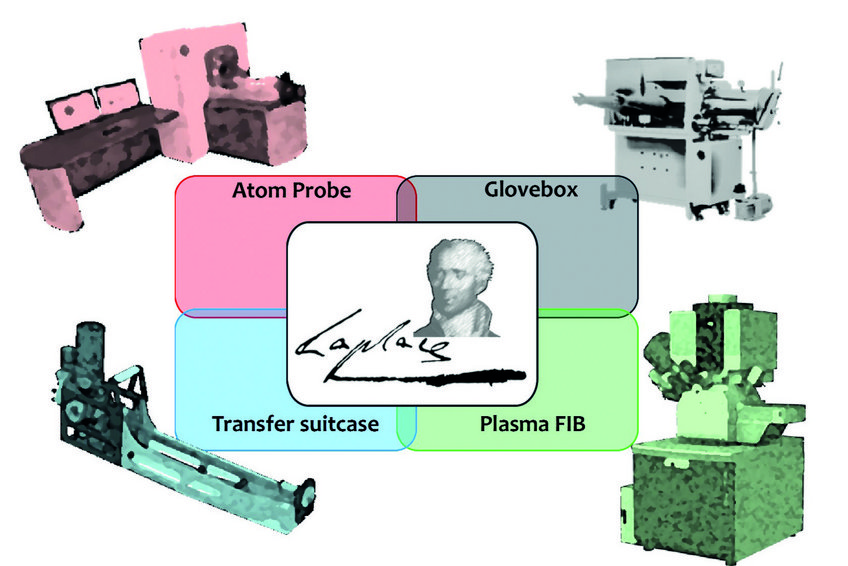The Laplace Project
In 1814, Pierre-Simon Laplace postulated that if at any moment a “demon” could know the position and momentum of each and every one of the atoms in the universe, it would know everything about their past and their future. Inspired by this idea, we started putting together infrastructure enabling the correlation of multiple microscopy techniques on the same specimen. The idea being then that if we can gain insights into the structure of a specimen from electron microscopy, and combining this information with atom probe enables us to get close to knowing rather precisely what all the atoms within the material are and where they are located.

Fig. 1: Combining different techniques and equipment to precisely determine the chemical composition and position of every atom in a sample.
We hence pursued this concept and developed the infrastructure for the Laplace project: an atom probe, a scanning-electron microscope equipped with a focused-ion beam (SEM-FIB) and a glove-box, all interconnected via ultra-high-vacuum transfer suitcases. The idea was to enable successive imaging and atom probing while minimising the contamination associated with taking the specimen out of the vacuum and transporting it into another microscope in ambient atmosphere conditions. An additional feature was to perform the imaging and possibly the preparation of the specimens, as well as these transfers at cryogenic temperature. This platform is versatile and additional devices are still being developed as we speak. The Max Planck Society supported the project with the purchase of a new atom probe and the associated development cost, as well as some of the scientists that are working to enable these breakthrough methodologies. The Federal Ministry of Education and Research supported the purchase of the SEM-FIB. For this latter instrument, we selected a Xe-Plasma FIB, instead of the more typical gallium-based instrument to mill larger volumes from a broader variety of materials. New research enabled by the infrastructure was the search for hydrogen in metals, which is the core topic of my ERC-Consolidator grant SHINE.
